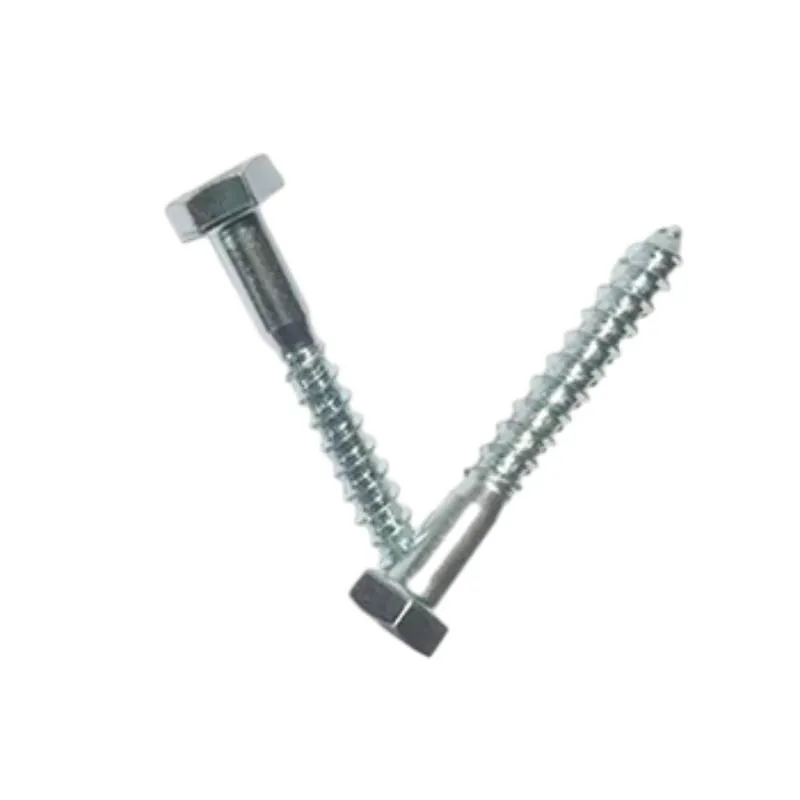oct. . 30, 2024 17:40 Back to list
rebar anchor bolts
Understanding Rebar Anchor Bolts Essential Components in Construction
In the realm of construction and civil engineering, the importance of reliable fastening systems cannot be overstated. One such crucial element is the rebar anchor bolt, a specialized fastener that plays a pivotal role in enhancing structural integrity. This article delves into the composition, function, installation, and applications of rebar anchor bolts.
Composition and Design
Rebar anchor bolts are typically made from high-strength steel to withstand significant tensile and shear loads. Their design often mirrors that of traditional anchor bolts, but what sets them apart is the incorporation of rebar. This aspect allows for a stronger bond between the bolt and the surrounding concrete, thus ensuring stability and control in various applications.
The rebar itself is usually ribbed or deformed, which assists in anchoring the bolt more effectively. This configuration enhances the mechanical interlock between the bolt and the concrete, minimizing the risk of loosening over time due to dynamic loads or temperature fluctuations.
Functionality
The primary function of rebar anchor bolts is to secure structures to their foundations. They are often used to attach machinery, equipment, and structural elements like beams and columns to concrete foundations. By anchoring these components firmly in place, the bolts help resist lateral and vertical forces, such as those generated by wind or seismic activity.
Moreover, rebar anchor bolts facilitate the transfer of loads between structures
. For instance, in multi-story buildings, an effective anchoring system is critical in ensuring that the weight and forces acting on the upper levels are appropriately transmitted down to the foundation. This transfer is essential for maintaining the overall stability and safety of the structure.Installation Process
rebar anchor bolts

The installation of rebar anchor bolts requires careful planning and execution. Initially, contractors must determine the appropriate location for the bolts based on load calculations and structural design. Holes are then drilled into the concrete base, and the rebar is inserted along with the anchor bolts.
Concrete is poured around the rebar and bolts, allowing the material to cure and form a strong bond once set. It is vital to ensure that the alignment is precise, as any deviation can lead to complications in load distribution and structural performance.
Once the concrete has cured, the rebar anchor bolts can be tightened to the specifications outlined in the project plans. This final step is critical, as it ensures that the components are securely fastened and prepared to support the intended loads.
Applications in Construction
Rebar anchor bolts have a wide range of applications across various sectors in construction. They are particularly valuable in heavy civil engineering projects, including bridges, dams, and high-rise buildings, where the loads can be substantial. Additionally, they are often found in industrial settings for anchoring machinery or equipment that requires a stable platform.
In recent years, as sustainable construction methods gain momentum, the demand for rebar anchor bolts has increased due to their contribution to long-lasting and resilient structures. They are essential in seismic zones, where the ability to withstand dynamic forces can mean the difference between a structure that performs effectively during an earthquake and one that does not.
Conclusion
In summary, rebar anchor bolts are integral components that provide strength and stability in construction projects. Their ability to secure structures effectively against various forces makes them invaluable in modern engineering. With ongoing advancements in materials and installation techniques, rebar anchor bolts will continue to evolve, further enhancing their role in ensuring safety and integrity in construction. Understanding their importance is essential for anyone involved in the field of civil engineering and construction.


